An Unexpected Bloom
Becoming a small-scale lavender farmer was never on my bucket list. No one had ever suggested it to me and wouldn’t have associated me with such a thing. It was not something I dreamed of… until I did.
I had spent the first decade of my adult life (before I met my husband) carving out a successful career as an artist, always living downtown, wracked with anxiety, and spending a lot of my nights taking in all the culture (and too many bars) the city had to offer. Due to a number of incidents (I don’t need to get into), I wasn’t able to do my work without panicking. I was full of guilt, I was self medicating, and I was generally very unhealthy. I found myself at a crossroads when I turned 30. Ignoring my mental health had taken its toll, I was no longer happy doing what I was doing, but I didn’t know what the next step was.
After some major personal changes, I went back to art school to study sculpture, was pregnant with my first daughter, and our boys (my step sons) were still small, my husband was offered a job running a rural theatre company dedicated to producing Canadian work. It was three hours from where we lived. In many ways this was a dream job for him and I was between things, so we committed to making it work. It was complicated, but pretty good in the beginning, though after a couple of years trying to commute and live in two places at once, we were exhausted and ready for things to shift. Through much complex decision making, in 2017 we packed up our house and our kids and moved from inner city Toronto to an acreage outside of Bayfield, Ontario.
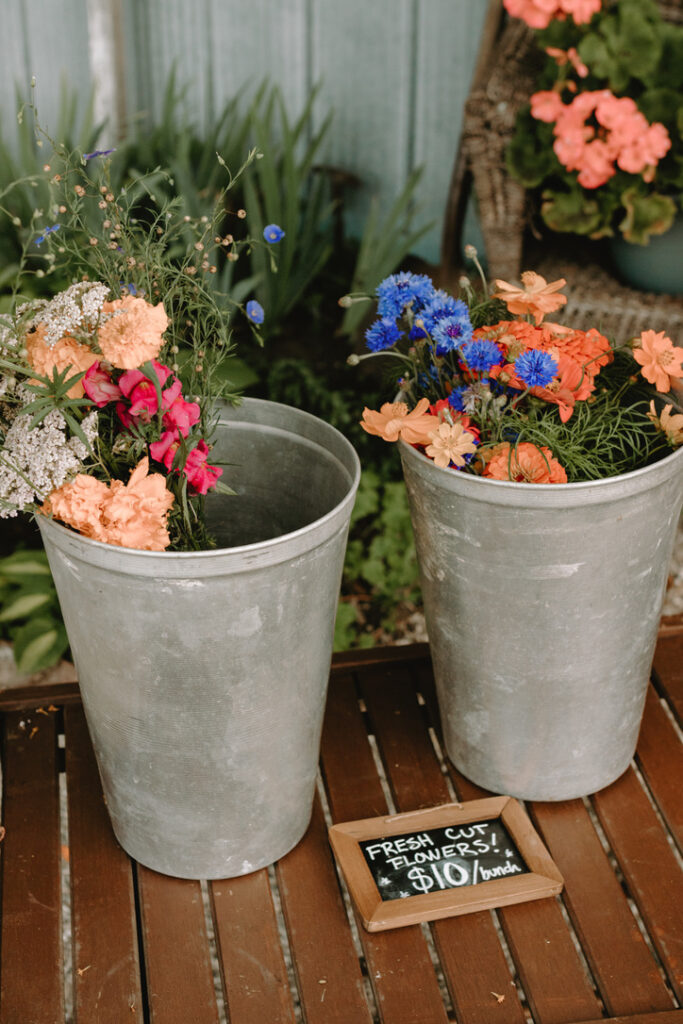
I’m not sure if I can accurately convey how ill-prepared for rural life I was, but perhaps this sums it up enough: I moved to a farm without a driver’s license or rubber boots. I’d never operated a tractor, collected an egg, or grown anything from seed. I’d left behind my friends, seemingly my career, and my public transit. Though it had all the makings for a classic sitcom trope, I was (surprisingly) taken with this new lifestyle immediately.
The sudden quiet, the physical space, and the slower pace relaxed my shoulders for the first time in many, many years. I felt at home, I could hear myself think. The beauty of the countryside was inspiring beyond my wildest dreams. Stillness. Of course, the cost of that tranquility is the demanding physical labor that caretaking a large piece of land requires. We had our work cut out for us. Aside from our modest chunk of woods, the majority of our property was all grass that had been left to ‘go natural’ for many years. This has its beauty and benefits of course, but we wanted to increase biodiversity, get more trees happening, and I had some naive, loose plans of wanting to raise chickens and possibly goats. We needed to manage the land a little differently. Those early days of figuring out how to do this created a new sensation in me – a calling.
We began tidying up. We planted hundreds of trees, designated a few areas for wildflowers, and removed tightly knotted masses of weeds while daydreaming about what we could do with our empty swaths of land. We suddenly owned a park. One of the first areas we tackled presented a gorgeous yet intimidating gift – six massively overgrown, very old lavender plants (so old, they had thick trunks). Not knowing much, I lightly trimmed them and made a joke about having an idyllic lavender farm.
These were the plants that would change my life.
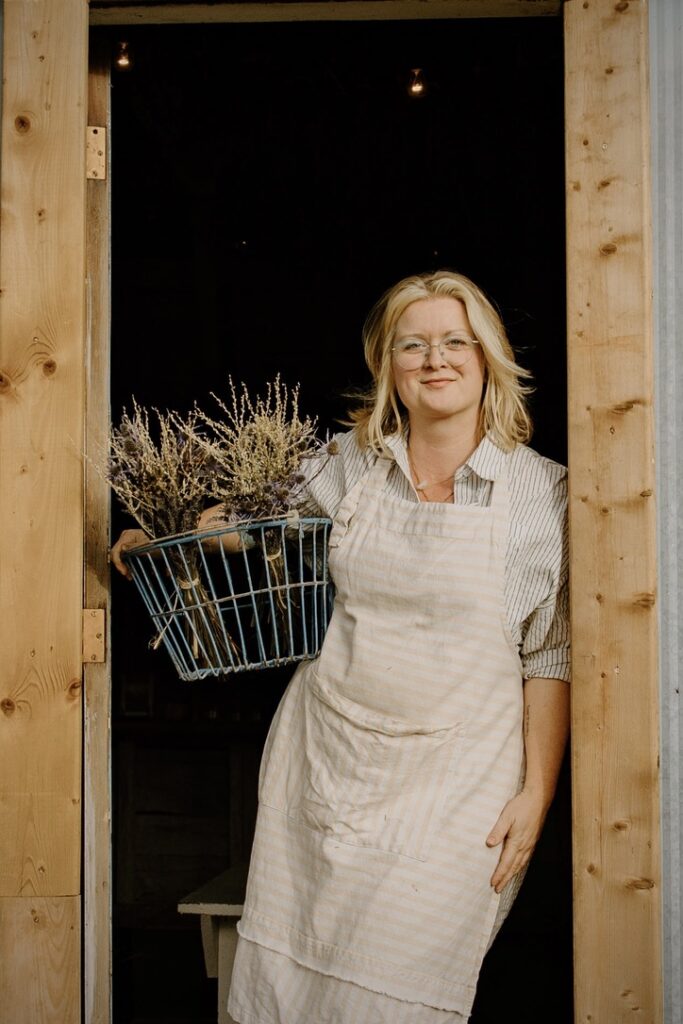
They had a prolific bloom later that summer, an impressive sea of purple. I was taken with their vibrancy, abundance, and (obviously) the incredible scent. My only previous experience with lavender had been planting one plant in our backyard planter in the city (backyard is a stretch… it was a cement pad) and being surprised when it came back the following year. With some encouragement from my husband who was eager to help me find my ‘thing’, I decided to harvest the stems with the intention of making some simple lavender crafts to sell at a local Christmas market, nothing to lose. The enthusiasm I received from people at the market was inspiring enough to motivate me to try my hand at propagation. Could I build the beginnings of an actual lavender farm from the cuttings of these original plants? I wanted to make more stuff. In order to make more products, I needed more flowers for harvest.
I set about researching, identifying what specific strain of lavender this was, watching dozens of YouTube videos, gathering a collection of books on the subject, becoming a rookie member of the Ontario Lavender Association which allowed me access to the invaluable findings of the lavender farming community from all over the province, plus OMAFRA studies, which were really excellent resources. I took my first cuttings that winter. Some failed, but a lot of them not only took root but thrived… I was set for spring planting.
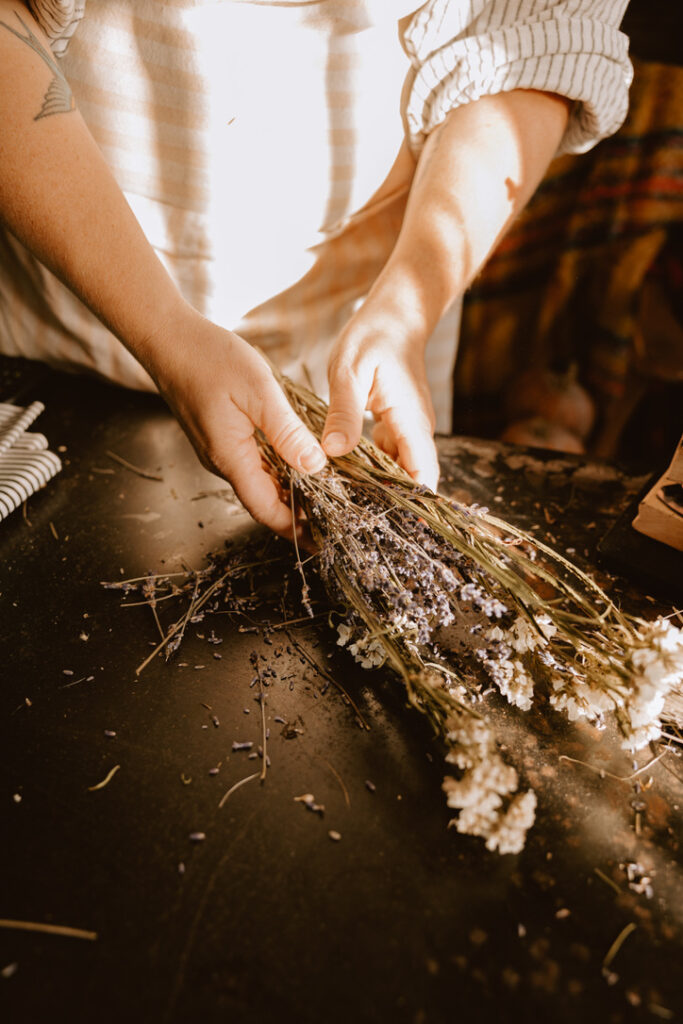
During this period, there were other rural-living learning curves I’d never expected to experience in my life. A somewhat grisly discovery that our very first flock of baby laying hens (Sophia, Dorothy, Blanche, and Rose) were mostly roosters. I learned to drive a car. I learned to drive a tractor. I learned to split firewood. I learned how to harvest and pluck a chicken. I learned not to waste daylight. I learned that my collection of beautiful vintage dresses weren’t going to cut it as farm-wear. In a very short time, I found myself growing tougher, listening to my instincts better, and becoming more deeply rooted to the natural world than I’d previously had the opportunity to be in my 30-plus years on this earth.
Then spring arrived. I put my 900 tiny lavender cuttings into the area that we’d cleared. The patch didn’t look like much – a plot of dirt with some flags marking the little starts so that we wouldn’t step on them… but once they were laid out in rows, I could visualize the possibility that was on offer. If they grew well, could this be my thing?
Those plants grew and grew. While they established themselves, I tried out a test plot of other lavender varieties I’d sourced to see which ones might be drought tolerant and cold hardy enough to stay, narrowing it down to two that I could stick with and had culinary potential. I propagated them too. Taking what I’d learned over the previous year, I adjusted my planting methods and these plants also took root. My first harvest was abundant… I started selling my wares at a few local farmer’s markets and had inquiries from some shops in the area. Did I have a lavender farm? Did I have a thing? The artistic obsession part of me took over and things got a bit more serious.
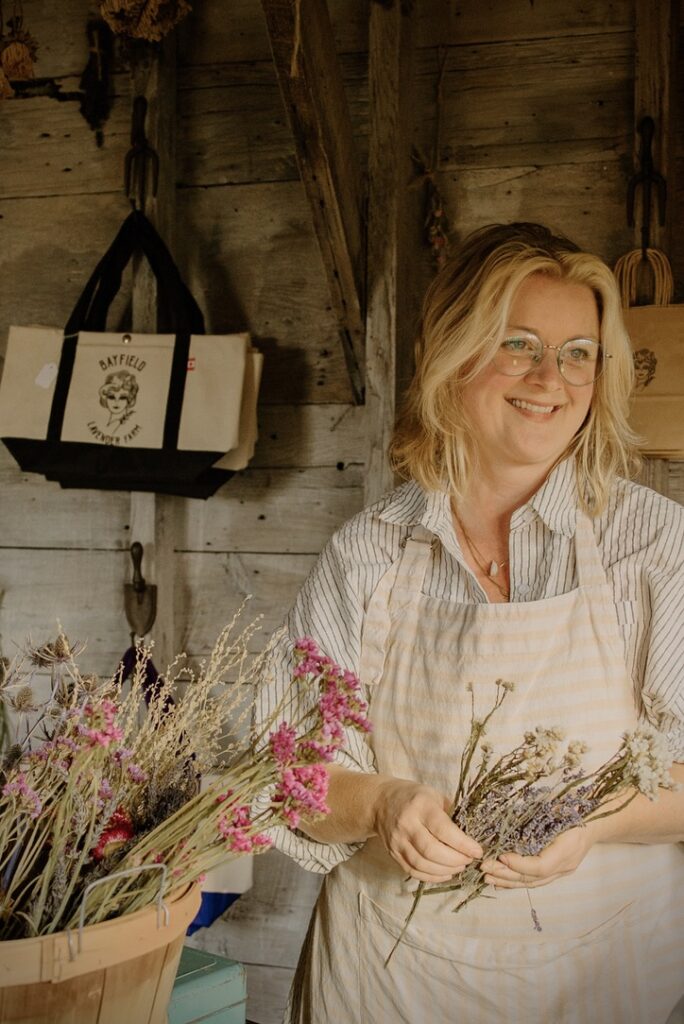
Since there are limitations for what I could do with dried lavender, the leap into distilling for essential oil was next. After a number of attempts with an arguably dangerous home-made still made from a pressure cooker, we acquired a very real, very serious still. And of course because I had a vision of making goat’s milk soap from scratch, we brought home two pregnant goats a few weeks before welcoming our second daughter, which seemed like ill timing, until the pandemic lockdowns hit a couple of months later. If you ever need something to distract you from looming societal collapse, I recommend teaching yourself how to birth a goat, keep baby goats alive during snowstorms, milk a goat who’s never been milked before, and then figure out what to do with four litres of goat milk every day. If you’re breastfeeding at the same time, it’s like a weird meta thing: you know how relieved that mama goat is going to feel when you help her out.
I needn’t describe too much of the collective trauma that was the global pandemic and the Groundhog Day nightmare that was lockdown or what it was to be postpartum during lockdown. What I will say looking back, though unplanned and unintentional, those (almost) two years served as a valuable incubation period for the lavender farm and brought some necessary personal changes forward. I quit drinking. I quit coffee. I tried to let go of some painful baggage. I guess in some ways, I became addicted to the garden and teaching myself to make new things, grow new things, and it got me through. What became crystal clear to me – I wanted to share the farm with people. I wanted the farm to be a safe, beautiful space to visit.
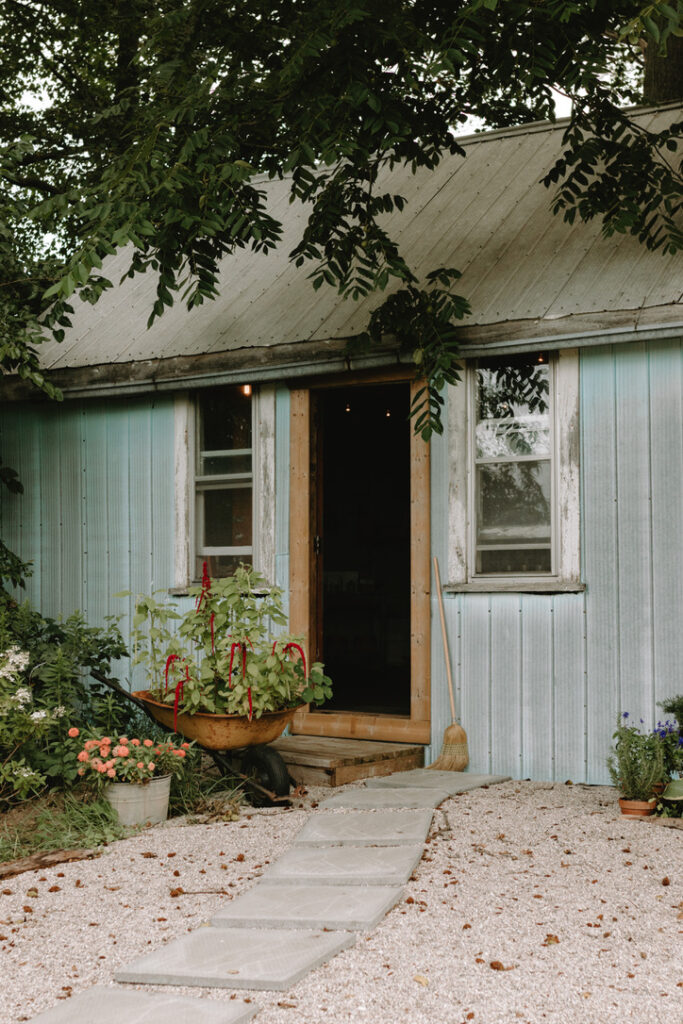
In June of 2023, I opened the farm up to visitors for the first time. My husband helped me convert a shed on the property into a charmingly rustic shop, full of my lavender creations and other handmade items. People showed up.
If you told me ten years ago that I would be driven, inspired, and healed by lavender, I would have rolled my eyes and made a self-deprecating joke of some kind. I never imagined I might find myself in this way, but it happened. I found forgiveness, resilience, stronger work ethic, and trust. I became a rural woman or maybe I always was one at heart, just waiting for circumstances to uncover what’s always been there – me.
Photography by: Hannah Tanner of Wild Poppy Photography
More Articles:
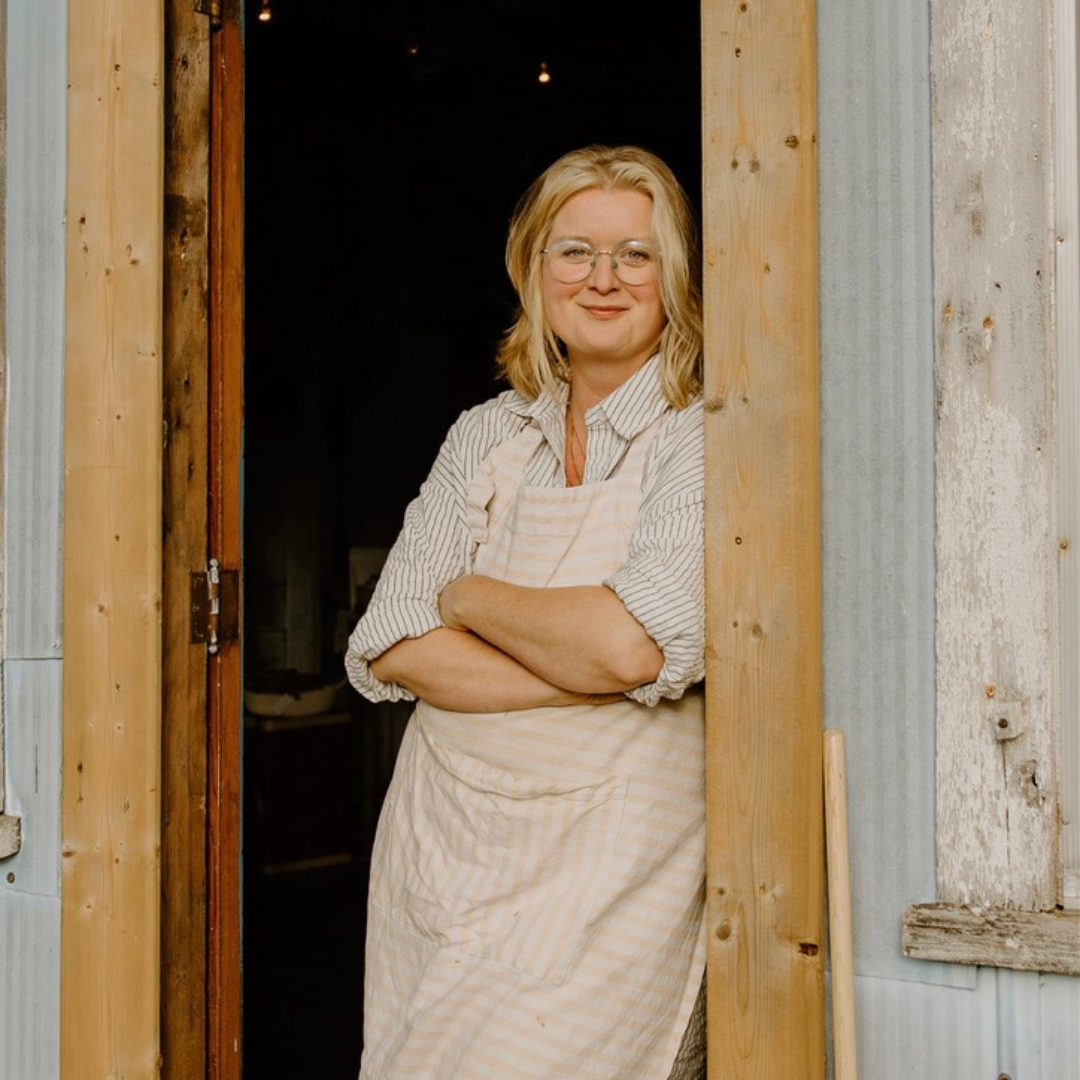
May 17, 2024
© 2025 Trailblazher Co. All Rights Reserved.
Legal